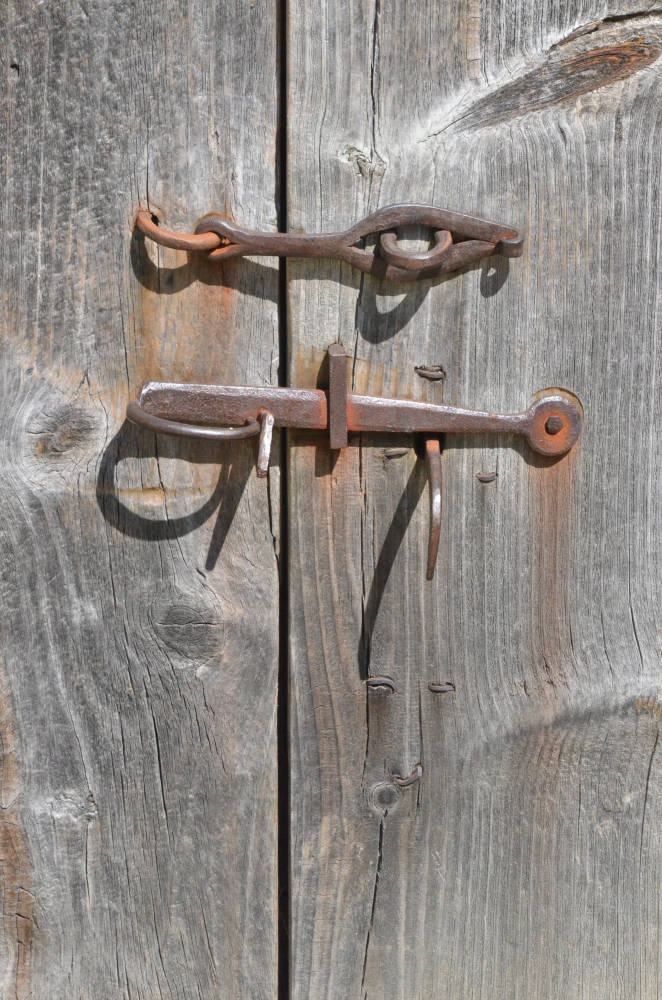
The skillful blacksmith at the Acadian Village in West Pubnico, Nova Scotia — Le Village historique acadien de la Nouvelle-Écosse — explained that in the eighteenth and nineteenth centuries, villagers relied on the local smith to create nails, tools, door hinges, and other kinds of metalwork. He then hammered out this four-sided nail on his anvil.


Left: The restored blacksmith's shop from the original village. Right: The blacksmith at work.


Left: Tapering the square-sectioned rod and making a point. The smith explained that one can distinguish early mass-produced nails from those made by smiths because whereas those made by hand in a forge have four tapered sides, factory-made ones, which are stamped from a metal sheet, are flat on two sides and taper on two. Right: The blacksmith creating the nail head by hammering it in a die when white hot.

Some of the tongs and other tools made in the blacksmith's shop.


Two examples of blacksmith's work on nineteenth-century barn. Left: A wooden barn-door hinge fastened with square-headed nails. Right: Iron door fastenings from the blacksmith. These photographs were taken not in Canada but in Old Sturbridge Village, another North American open-air museum, which preserves various buildings from around New England, representing a small town in the northeastern United States at 1830 after the Industrial revolution has had a major effect upon farm and village life.
[Click on these images to enlarge them.] Photographs by George P. Landow. You may use these images without prior permission for any scholarly or educational purpose as long as you (1) credit the photographer and (2) link your document to this URL in a web document or cite the Victorian Web in a print one.]
Last modified 27 August 2014